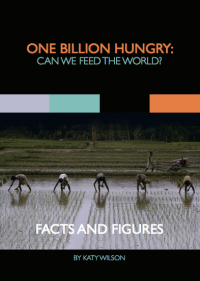
“Green rice field in Chiang Rai, Thailand” by punsayaporn
Habitat loss driven by expanding agricultural land is a major driver of biodiversity loss. Two, seemingly opposing, strategies have been proposed as a way of reconciling increased demand for agricultural production and conservation of biodiversity, and in turn preventing further conversion of natural habitat to farming: land sparing (the intensification of agriculture to set aside land for conservation) and land sharing (the integration of farming and conservation on agricultural land such as eco-agriculture).
Up until now the land sparing/land sharing debate has largely revolved around theoretical arguments. Much of the support for land sparing has come from using data to maximise the number of species conserved under a fixed level of agricultural production in various settings, with the finding that more species are negatively affected by agriculture than benefit from it. But, in general, little of the discussion has focused on the way in which land sparing might be achieved. Now in a recent paper in Science by Phalan et al, the way in which land sparing could become a practical approach to biodiversity conservation and improved agricultural productivity is explained in more detail.
Land sparing as an approach has been criticised for failing to consider situations where agricultural intensification has stimulated expansion of farming rather than protection of land for conservation. Proponents of the approach acknowledge this phenomena and the fact that rising demands and increased productivity can increase the “opportunity cost of conservation”. To tackle this significant obstacle authors introduce four mechanisms that aim to link agricultural productivity and biodiversity or habitat conservation, and thus avoid rebound effects of increased yields driving growth in the agricultural industry rather than sparing land.
- Land use zoning. By zoning areas for agriculture or conservation, expansion can be limited, which may motivate landholders to improve productivity and efficiency on existing agricultural land. There is the potential for habitat to be converted to farming outside of the zoned area though, otherwise known as displacement or leakage. The success of Costa Rica in halving deforestation of mature forests by preventing agricultural expansion onto forests through zoning, and the subsequent increase in fruit production, is given as an example.
- Economic instruments, such as payments, land taxes, and subsidies. Such instruments can have conditions built in to protect habitat for biodiversity but they are also notoriously difficult to implement and maintain so that all parties benefit. Considered a successful example, the incentive programme jointly developed by herders and local government in the Spiti Valley of Himalayan India to set aside land for snow leopard prey in exchange for payment and technical assistance has, within the first four years of the project, reduced the amount of livestock killed by snow leopards by two-thirds and reduced the amount of snow leopards killed down to zero. [Read more…]








